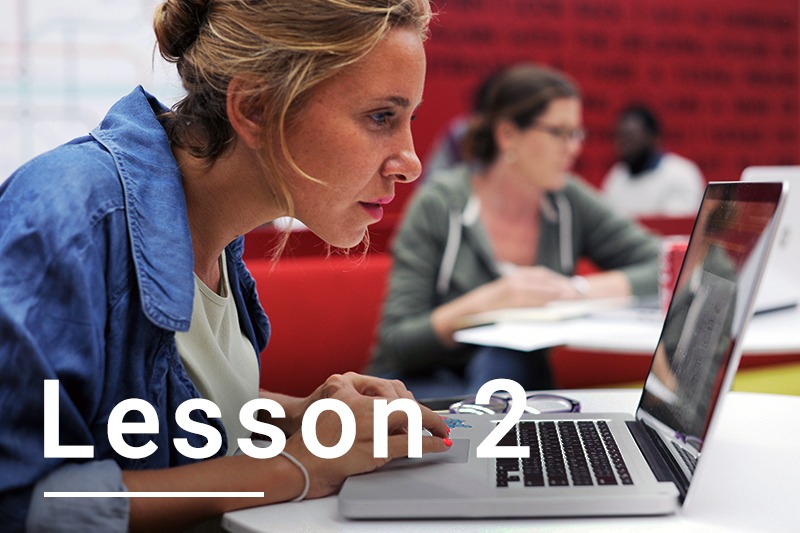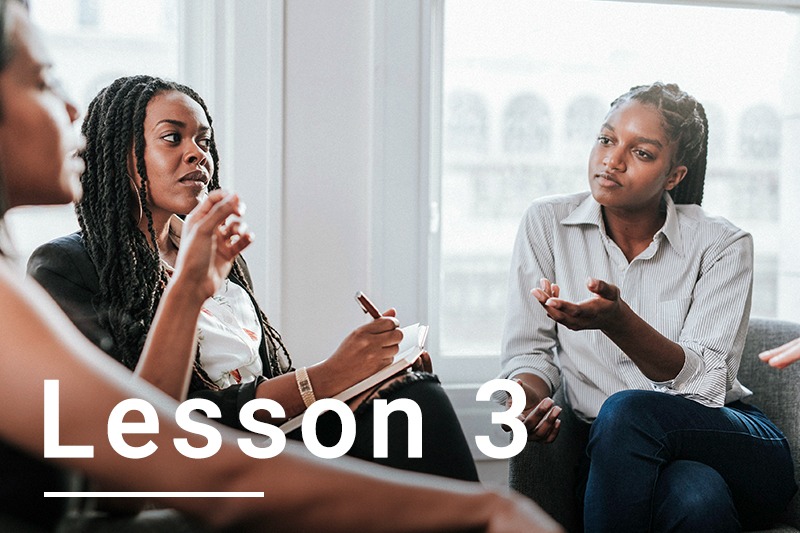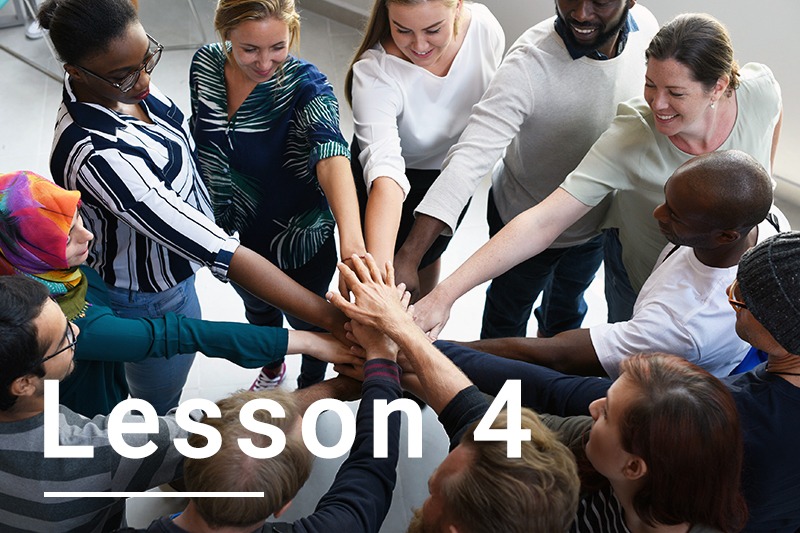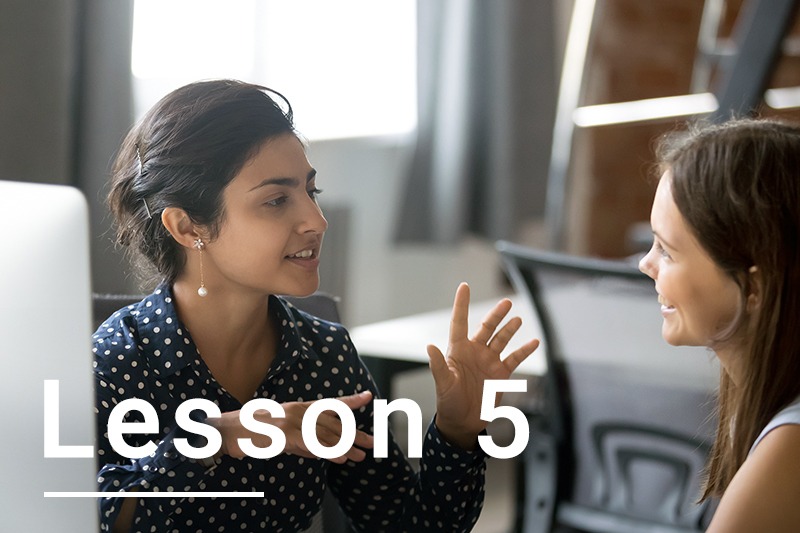The development of elearning is advancing rapidly and it’s important to stay up-to-date with learning technologies, but you want to make sure you’re not just following fashions for the sake of it. Research is key, but as a busy professional it can be tricky to stay on top of the latest studies. How can you make sure you’re in line with the evidence? What should be your priorities and values? Explore our five key lessons for L&D departments based on sound research and business insights.

Lesson 1: integrate and embed the technology
You can have the most incredible learning technology in the world available at your fingertips, but if nobody can use it (or access to it is locked away somewhere in the IT department) it won’t have an impact on development. Learning designers, HR teams, managers and trainers all need to have ownership of your elearning tools. Access for learners should be seamless; and as we all know, integrating technology seamlessly can be a real challenge!
Employee-created elearning can be an invaluable resource in any organisation. Putting course creation tools into the hands of teams across the business – rather than just limiting access to staff in the L&D department – can have some powerful effects. You can start small, but choosing an elearning platform that’s easy to pick up is certainly a good choice.
Goal: Ensure the platform is available to everyone, that it fits everyone’s needs, and that the choice of platform isn’t the prerogative of the ‘techies’ alone. Nimble Author is an intuitive tool, designed for everyone to use.

Lesson 2: learning needs to involve curiosity
Harold Jarche, the social learning guru, claims the drawback to training employees lies in the emphasis on process and routine. He compares the way artists learn, through experiment and discovery, with what he calls the ‘drill and fill’ approach most organisations employ. He says, “If you’re promoting learning, part of that is being curious yourself, then taking that curiosity and saying ‘how could this be interesting to someone else?’ is important.”
Julie Dirksen, world-renowned learning designer, reminds us that people are naturally inquisitive. In her book ‘Design For How People Learn’, she gives three pointers to bear in mind when designing learning activities:
- Be mysterious: try kicking off a course with a case study featuring a spectacular failure: can you learners use clues to work out what went wrong?
- Leave stuff out: it can feel hard to do this when your whole job is about teaching people information, but sometimes that missing piece is enough to draw your learners in.
- Be less helpful: don’t provide too much information when you present a problem to be solved. Real-world issues are rarely tidy!
Goal: Don’t just ‘show and tell’: encourage learners to ask questions, to explore and to find out information. This deepens the learning process; what is learned, sticks!

Lesson 3: make it policy to listen to your learners’ voices
According to research (‘Modernising Learning, Delivering Results’) by Towards Maturity, there is a disparity between what learners and learning designers believe:
“The findings from our learner research in the case of knowledge and office based workers is that:
- 88% of workers learn through collaboration with others
- 80% are willing to share what they know
- 70% learn to improve their work through Google
- 85% are finding apps and tools themselves to help them do their jobs better and faster
“…whereas L&D managers believe this is true of only 20% of their workforce.”
This research found the successful organisations used ‘Learner Voice’ to improve quality. It meant they were four times more likely to actively encourage staff to collaborate in building knowledge resources, using tools such as forums, podcasts and videos.
Goal: Learning shouldn’t be something done to the learner, it should be done with them. Consultation, negotiation and plain old listening will improve engagement and success.

Lesson 4: successful organisations are learning organisations
Learning, training and development shouldn’t be the poor relation, operating with a restricted budget. Not an easy message in the current economic climate. Towards Maturity’s research found that in the top ten high performing organisations, learning was a priority. Employees were given access to education that improved specific skill-sets and knowledge identified by the company at a strategic level. Elearning ensured this was done consistently, cost-effectively and coherently, making sure everyone knew why their education was important.
Despite this, CIPD’s 2019 research report ‘Professionalising Learning and Development’ found that many business leaders had a limited vision for learning, only considering face-to-face options, and this had a big impact on preventing innovation in learning and development departments.
In 2020, the LinkedIn Learning survey found that the biggest barrier to learning in the workplace is a lack of time, with 49% of employees saying they just don’t have the time in their day. Embedding learning in our organisations is key to providing employees with the tools and space to develop – and to improving performance across the business.
Goal: Learning should be at the heart of the organisation’s culture.

Lesson 5: develop people, not topics
Occupational psychologist Gary Luffman, of the think.change consultancy, believes organisational success comes when employees’ development is broader than simple business targets. Success comes from developing people – which is often achieved by coaching in the workplace. Of course, there are so many benefits to be had from an experienced employee taking the time to work one-to-one with a less experienced employee. However, this doesn’t preclude the use of elearning. Getting to know the development needs and interests of each member of staff can help L&D professionals design more effective courses. Building up a bank of elearning resources for teams to use in a personalised way brings the focus back to the learner as an individual; in the 2020 LinkedIn Learning survey, 54% of learners said they would spend more time learning if given specific recommendations to meet their own needs.
Goal: Learning and development needs a holistic approach, not one focused on single issues entirely related to performance and compliance.
Fundamentally, learning should be at the heart of your organisation, whatever its size. Elearning is just one string in your bow, but used strategically it can have a significant impact: making employee development accessible, relevant and engaging. Listen to your learners and empower them to harness their natural curiosity.


0 Comments